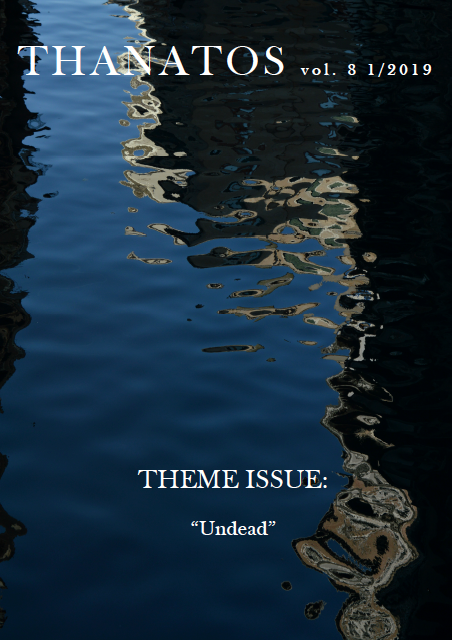There is More than Meets the Eye. Undead, Ghosts and Spirits in the Decretum of Burchard of Worms
Abstract
The Corrector, that is, the nineteenth book of Burchard of Worms’s Decretum, is widely recognized as one of the essential sources for the study of pagan survivals around the year 1000 A.D. in Germany – more specifically, in the Rhenish Hesse. The Decretum is in itself an important collection of canon law of its time, but the Corrector in particular has drawn the attention of scholars because of its peculiarities. Most interestingly, despite being partially based on previous penitentials and council canons, book nineteen of the Decretum was also partly written originally by the Bishop of Worms himself, and thus turns out to be a fundamental penitential text for the understanding of pagan survivals at the time and in the place of its composition. The source proves all the more useful for scholars interested in beliefs concerning death, the “undead”, and the likes, even though terminology can be deceptive: for this reason, modern and anachronistic taxonomies such as “ghost”, “undead”, “revenant”, etc. will be discarded, in favour of an emic approach which aims at respecting the text and imposing as fewer filters as possible. As a matter of fact, Burchard mentions many kinds of otherworldly entities which recall our modern notions of “ghosts”, “spirits” and “undead”, but often does not attach further details to identify them – either because he did not deem them worthy of his attention, or because he might have not known folk beliefs in detail. In any case, Burchard’s Germany appears to be densely populated: people share their space with hordes of “spectres”, seem to be aware of it, and often believe to be able to join them. The aim of the present contribution is then to analyze those folk beliefs which involve otherworldly entities, in order to critically discuss their characteristics and understand their implications among the people of Hesse around the year 1000. Attention will be specifically focused on the relationship between the living and the dead/undead, and will cast light on a series of related aspects such as: 1) the bias against women – who were held naturally predisposed to credulity; 2) positive/negative interactions between man and otherworldly entities; 3) attributes associated to said entities (persistent, wicked, benevolent/malevolent, etc.); 4) the fear of the darkness due to the supposed activity of evil spirits in the night hours; 5) the role of otherwordly entities at the service of the living; 6) the fear that the dead may rise again and harm the living.
Downloads
Published
Issue
Section
License
Copyright (c) 2023 Andrea Maraschi

This work is licensed under a Creative Commons Attribution-NonCommercial-NoDerivatives 4.0 International License.





